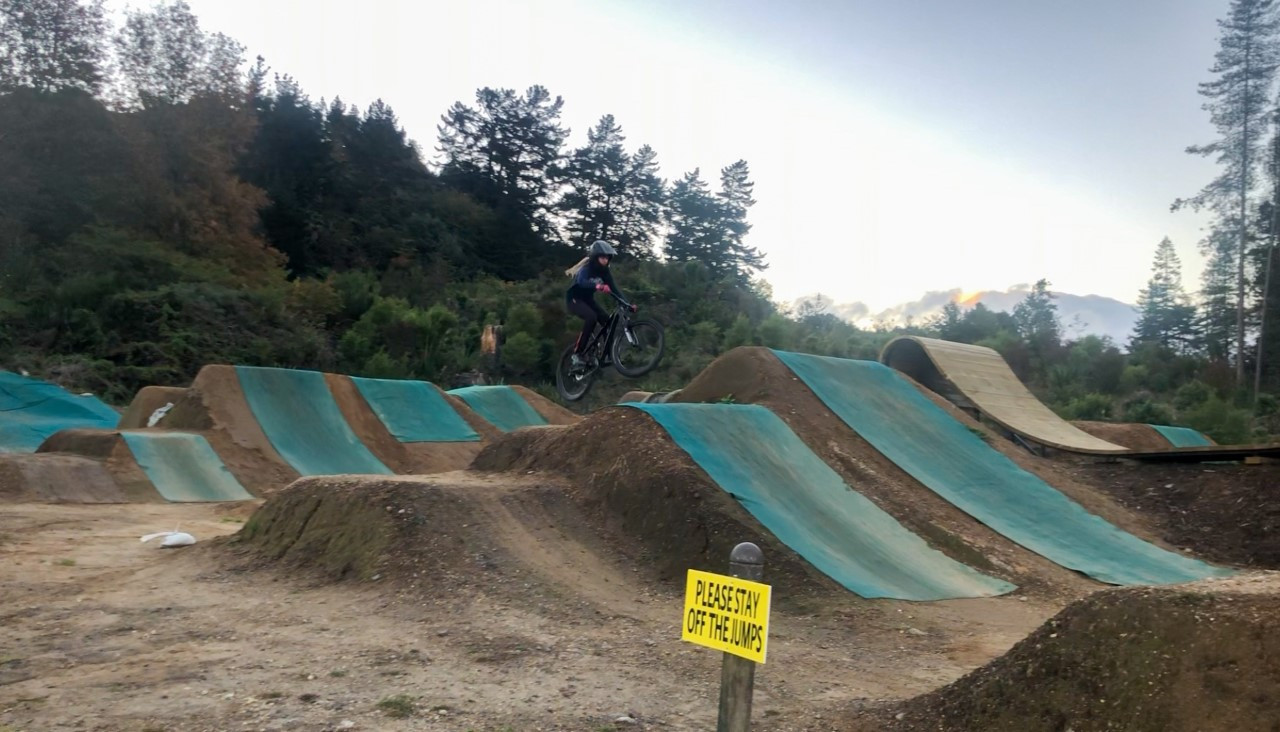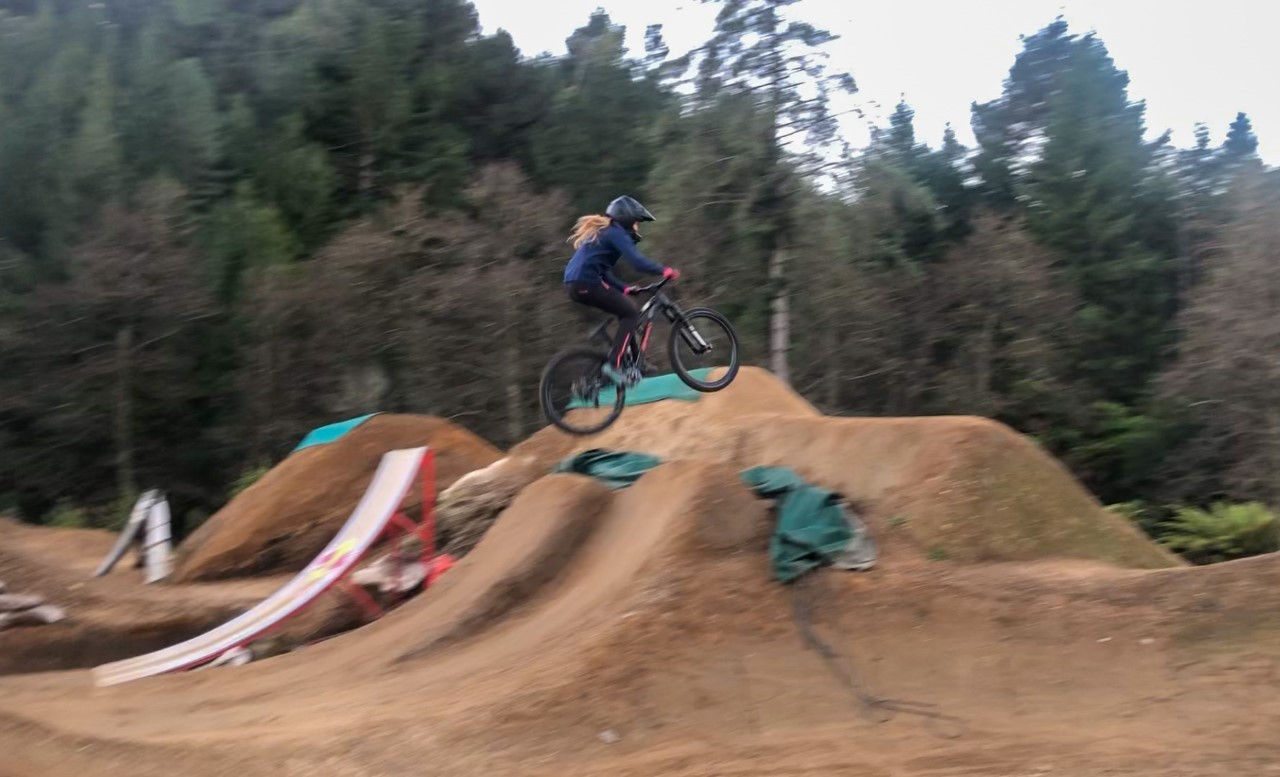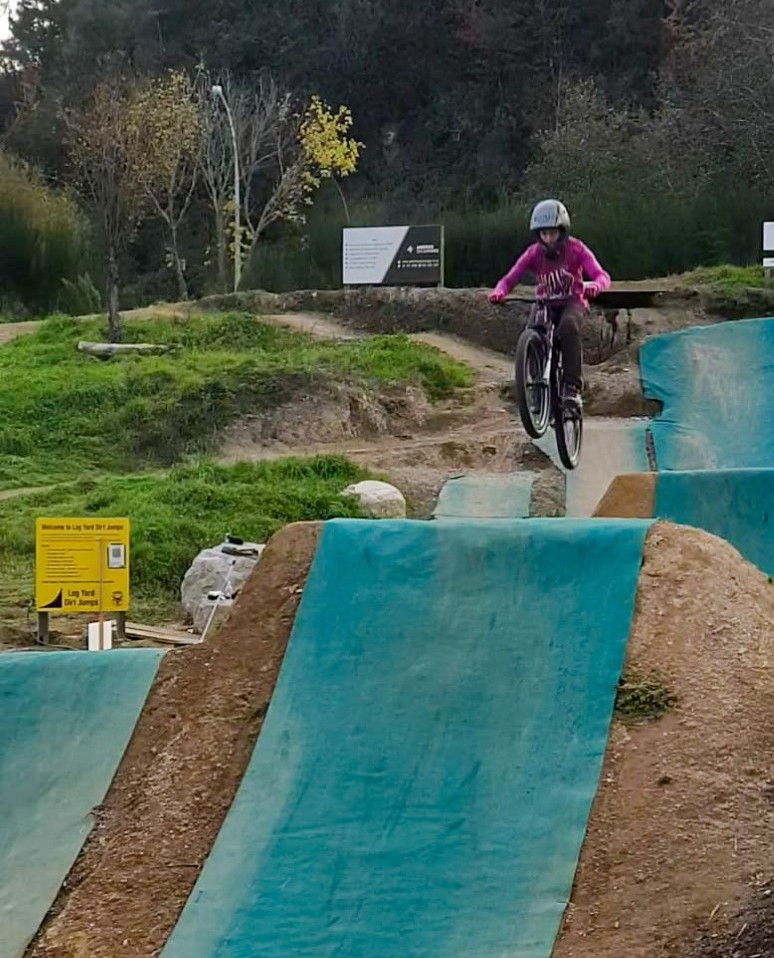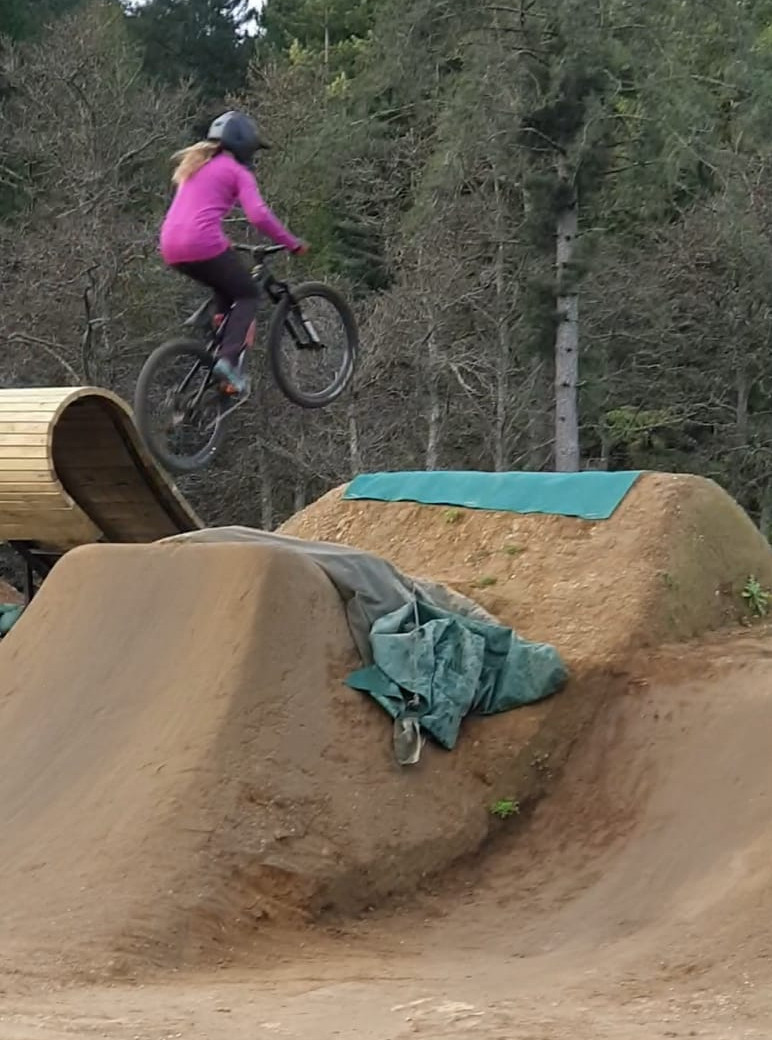As a content creator for usabikers.net and a self-confessed enduro enthusiast, I’ve always thrived on challenging trails and downhill runs. However, the world of Dirt Jump Bikes, with their small wheels, flat pedals, and meticulously sculpted mounds of earth, remained firmly outside my comfort zone. The thought of launching myself into the air on a bike designed for maximum vertical lift was, to put it mildly, intimidating. Yet, driven by a desire to broaden my mountain biking skills, I decided to confront my apprehension and dive into the realm of dirt jumping. This is my story of embracing the dirt jump bike and the exhilarating, and sometimes terrifying, journey it took me on.
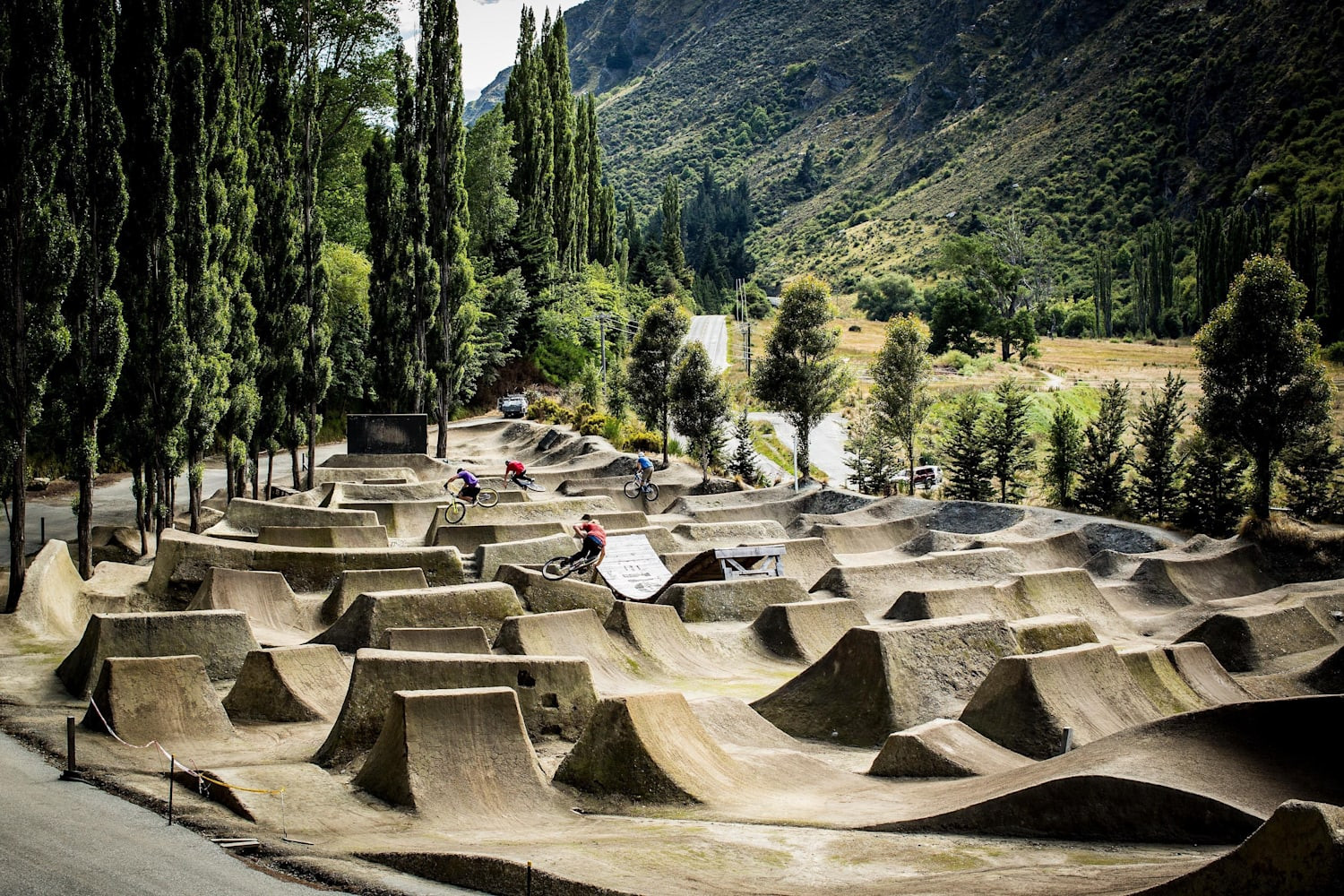
Gorge road jump park – Redbull Media.
My foundation of bike handling skills was solid, but the jumps I typically encountered on enduro trails were vastly different from those in a dirt jump park. Trail jumps are often designed for speed and momentum, requiring a rider to pedal hard and pull up just enough to clear the distance. The emphasis is on forward motion, not generating significant airtime. Dirt jumps, conversely, are engineered to propel you skyward. Approaching them feels like riding towards a solid wall, one you desperately want to clear, both in front and behind you. The take-offs are steep, and the landings are equally abrupt. Unlike the gradual arcs of trail jumps, dirt jumps demand confidence in arcing the bike through the air, gracefully nosing it down towards the landing – a calculated rainbow trajectory. For someone like me, who instinctively seeks stability and straight lines, this aerial dance felt like an extra layer of complexity piled onto an already substantial heap of fear.

Jumps found on trails tend to have long and low arcs, and require more speed to clear.
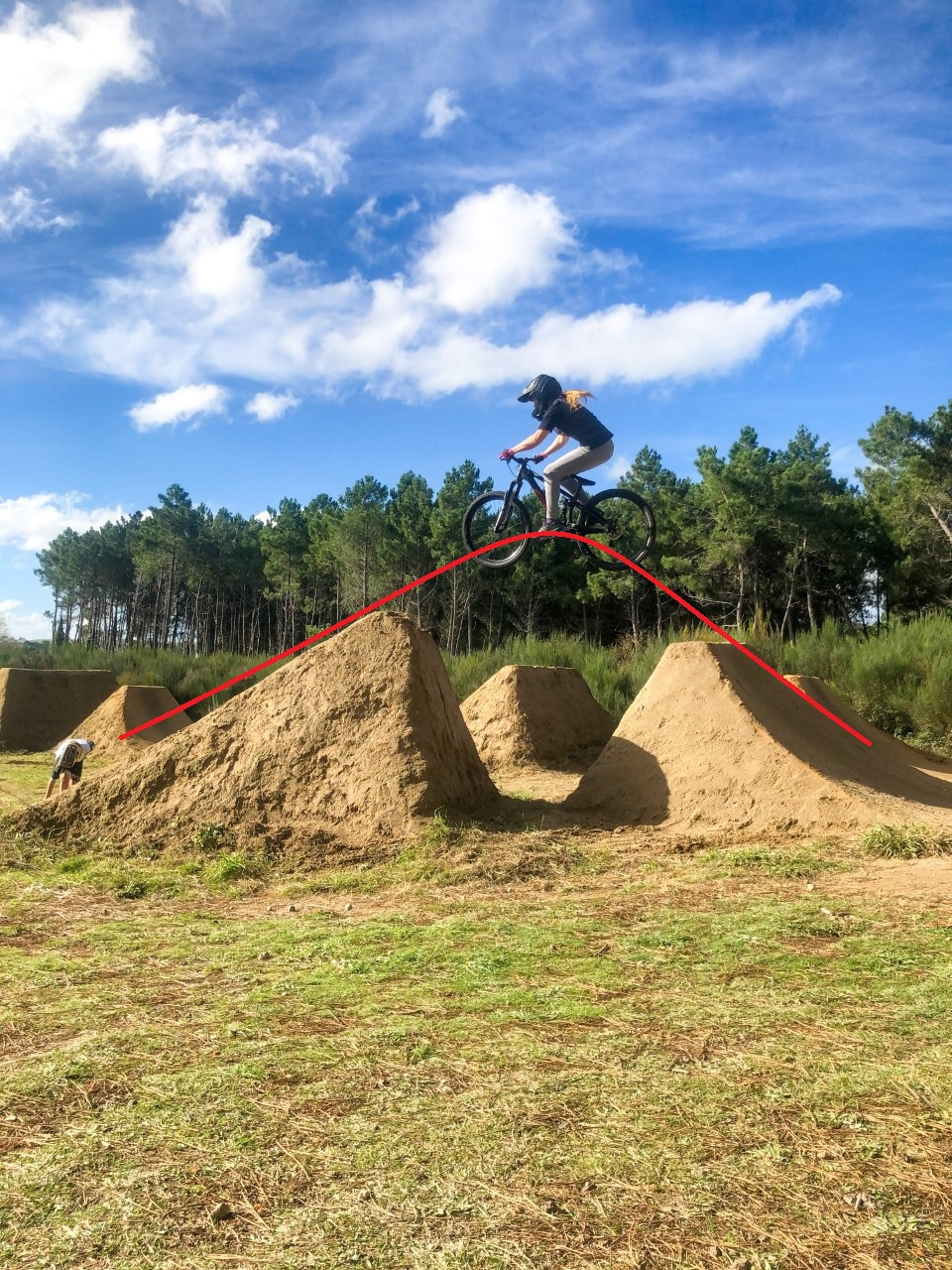
Dirt jumps have a shorter, but higher arc, they require the ability to generate lift to clear.
Dirt jumps are more than just mounds of dirt; they are carefully crafted works of art. Their geometry is precisely sculpted to provide a smooth launch while maximizing “air time”—the duration your wheels leave the ground. The longer the air time, the greater the opportunity for riders to execute tricks. Maintaining these jumps is labor-intensive. Regular watering and shaping with shovels are essential to keep them in prime condition. Many parks use tarpaulins to cover jumps when not in use, preventing them from drying out and cracking. To preserve the jump’s integrity, most dirt jump bike riders opt for smoother tires with minimal tread. This also enhances rolling speed, minimizing the need to pedal between jumps. A well-designed jump line allows riders to maintain momentum throughout; a smooth first jump should ideally set you up to clear the entire line without pedaling.
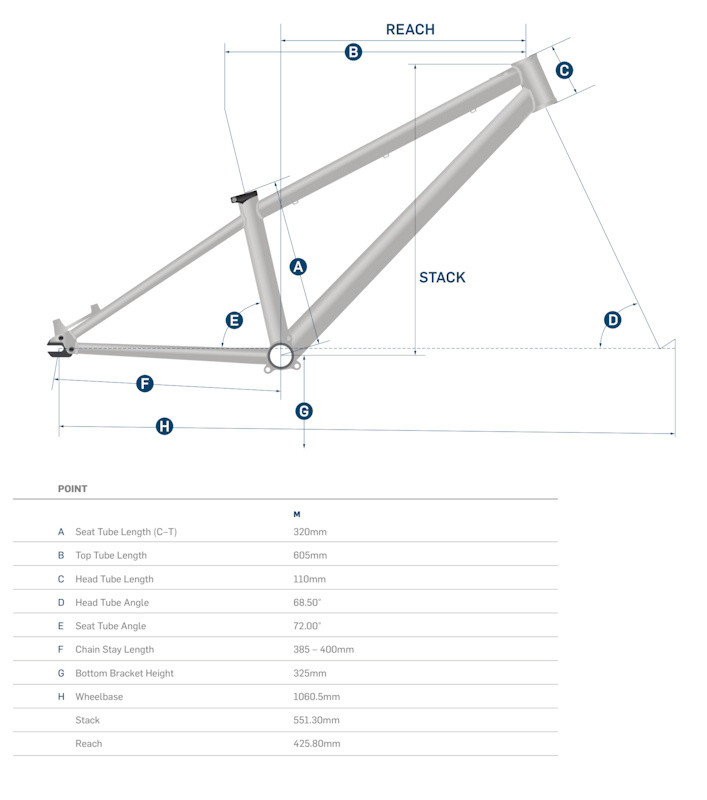
Geometry of an average Dirt Jump bike – Pivot Cycles DJ bike, showcasing typical features like small frame and low saddle.
Beyond tire choice, dirt jump bikes differ significantly from trail bikes. They are typically smaller, featuring steeper geometry, 26-inch wheels (in contrast to the 27.5 or 29-inch wheels common on enduro and downhill bikes), and saddles slammed as low as possible to stay out of the rider’s way. Tire pressures are higher, and suspension setups are much stiffer, all contributing to increased rolling speed and jump lift. Flat pedals are another key feature. While flats are still common among trail riders, I had transitioned to clip-in pedals years ago. Reacquainting myself with flat pedals required a conscious effort to keep my feet planted and properly positioned. Old habits die hard; I even found myself making the sound of clipping in at the top of a run, a subconscious attempt to reassure my brain that I was still securely connected to the bike.
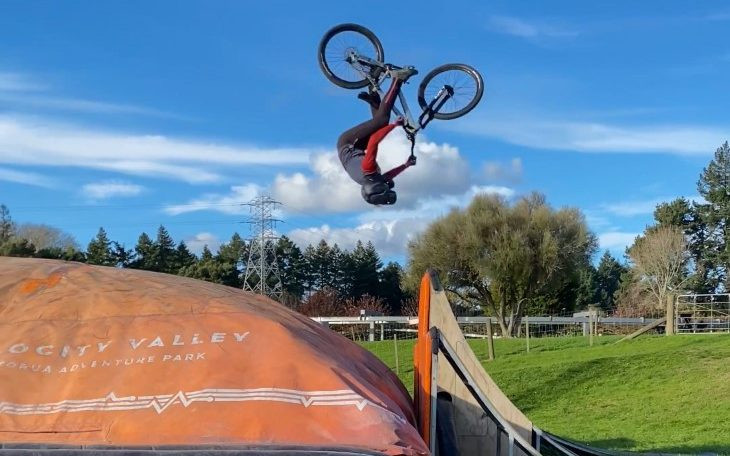
Learning backflips on an airbag at Velocity Valley adventure park, Rotorua, New Zealand.
Jumping had always been an appealing aspect of mountain biking for me, but not something I had pursued seriously. I even owned a dirt jump bike, but its primary use had been practicing tricks on a local airbag. So, I found myself in a peculiar situation: some aerial experience and a handful of tricks, but zero dirt jump park experience. When an invitation to ride at the local Logyard Dirt Jumps in Rotorua came my way, I eagerly accepted. With the race season concluded, dirt jumping seemed like the perfect change of pace from long, rainy autumn trail rides. I intentionally kept my expectations low, setting no specific goals. Knowing I’m a slow learner and not one for peer pressure, I went simply to experience it and see what dirt jumping was truly about.
Well-designed dirt jump parks often feature multiple jump lines, rows of jumps with varying difficulty levels. Progression lines, common in many parks, are smaller with gentler lips and often incorporate table tops (jumps without gaps), minimizing the consequences of errors. On my first visit to Logyard, I was content lapping the table top line. Once I felt comfortable, I progressed to clearing the end gap jump. This small victory did wonders for my confidence, exactly as intended. Excitement surged as I contemplated the next step: the main line.
Progression jump lines at Logyard Dirt Jumps, Rotorua, designed for skill development.
The main line was undeniably intimidating. Steeper than anything I had previously ridden, committing to the take-off felt like a point of no return. I rely heavily on the judgment of more experienced jumpers to gauge my speed and ability to clear features. With ample encouragement, I dropped into the line. After a couple of practice runs to assess my speed, I committed. I’m the first to admit I struggle with commitment when facing new features. Overthinking and hesitation are my typical responses, often chickening out multiple times before finally committing. My personal workaround is to consciously ignore the landing and what to do in the air. My muscle memory usually handles the aerial maneuvers. Instead, I focus solely on the lip of the jump, aiming for the center of the take-off. And it worked. Clearing that first jump shattered the wall of fear, and the second jump in the line followed quickly after.
Rider celebrating after clearing jumps at Logyard Dirt Jumps, Rotorua, expressing joy and accomplishment.
This experience led me to the Jump Jam. I had heard of these events but never attended one, unsure of what to expect. Friends alerted me to a Jump Jam at Spa Park Dirt Jump park in Taupo, about an hour’s drive away. We decided to go as a group. I anticipated an intimidating atmosphere, filled with exceptional riders. While there were certainly skilled riders present, the event was anything but intimidating. Fifty or more riders of varying skill levels were there, relaxed and enjoying themselves. Although a high jump and trick competition were part of the event, the primary focus was camaraderie—spending an afternoon riding with friends, lapping the bike park, enjoying burgers, and raising funds for jump maintenance.

Pro jump line at Spa Park, Taupo, featuring large, tombstone-like jumps designed for advanced riders.
I arrived at Spa Park with no expectations. While the jumps were slightly smaller than those at Logyard, I had never ridden the Taupo dirt jumps before and was hesitant to tackle them with such a large crowd present. However, as I became more comfortable and absorbed the positive energy of the event, I found myself enjoying the challenge of navigating the jump line. Having supportive and knowledgeable friends to discuss approach strategies and check my speed was invaluable. By the end of the day, I was genuinely pleased with my progress. Despite numerous run-ins before committing, I successfully cleared the first two jumps on the middle line. I was poised to attempt the third, but the organizers began setting up scaffolding for the high jump competition on it. Attempting a new jump for the first time surrounded by scaffolding felt like a step too far.
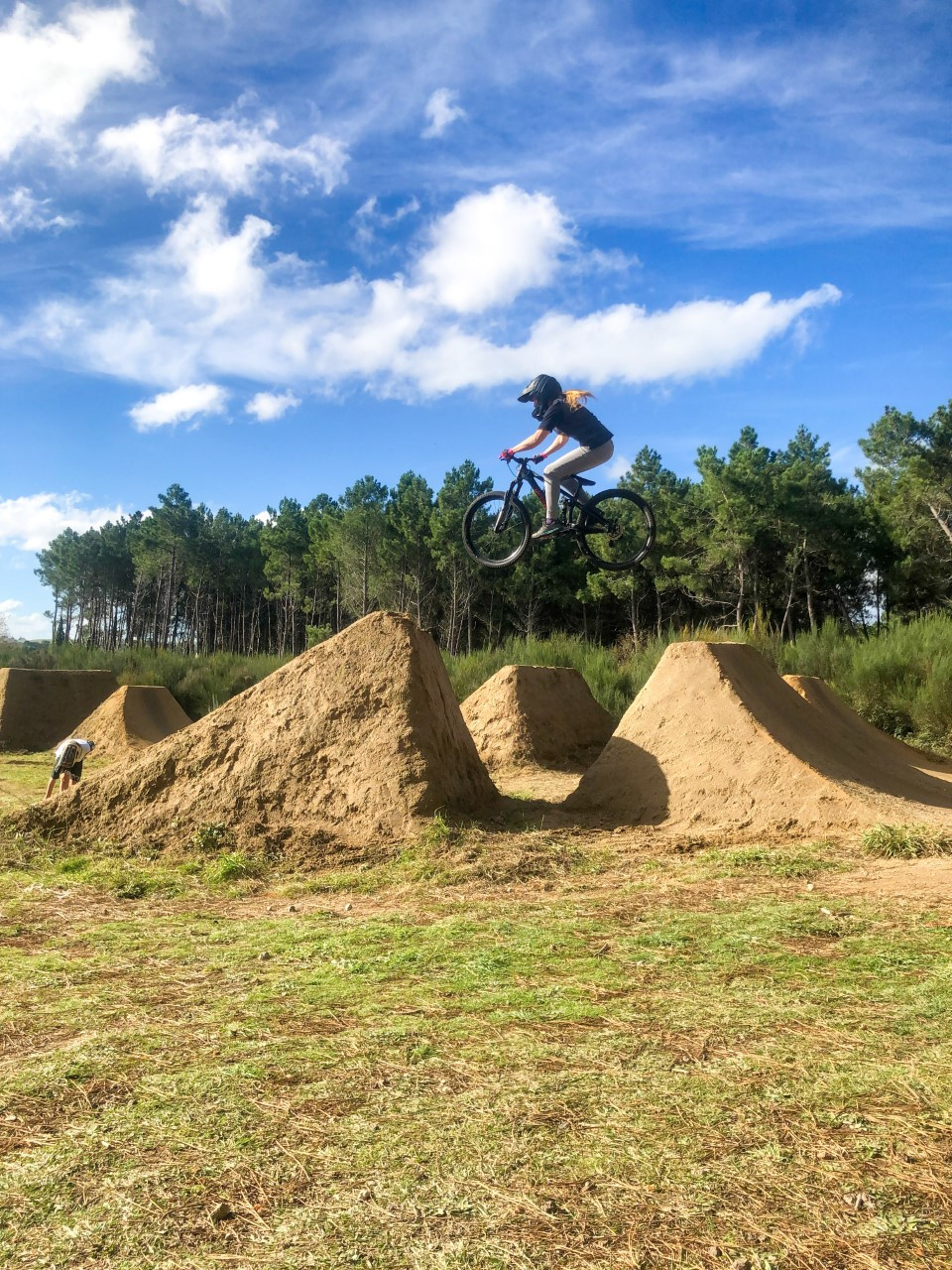
Spa Park dirt jumps in Taupo, showcasing well-maintained jump lines and a rider preparing for a jump.
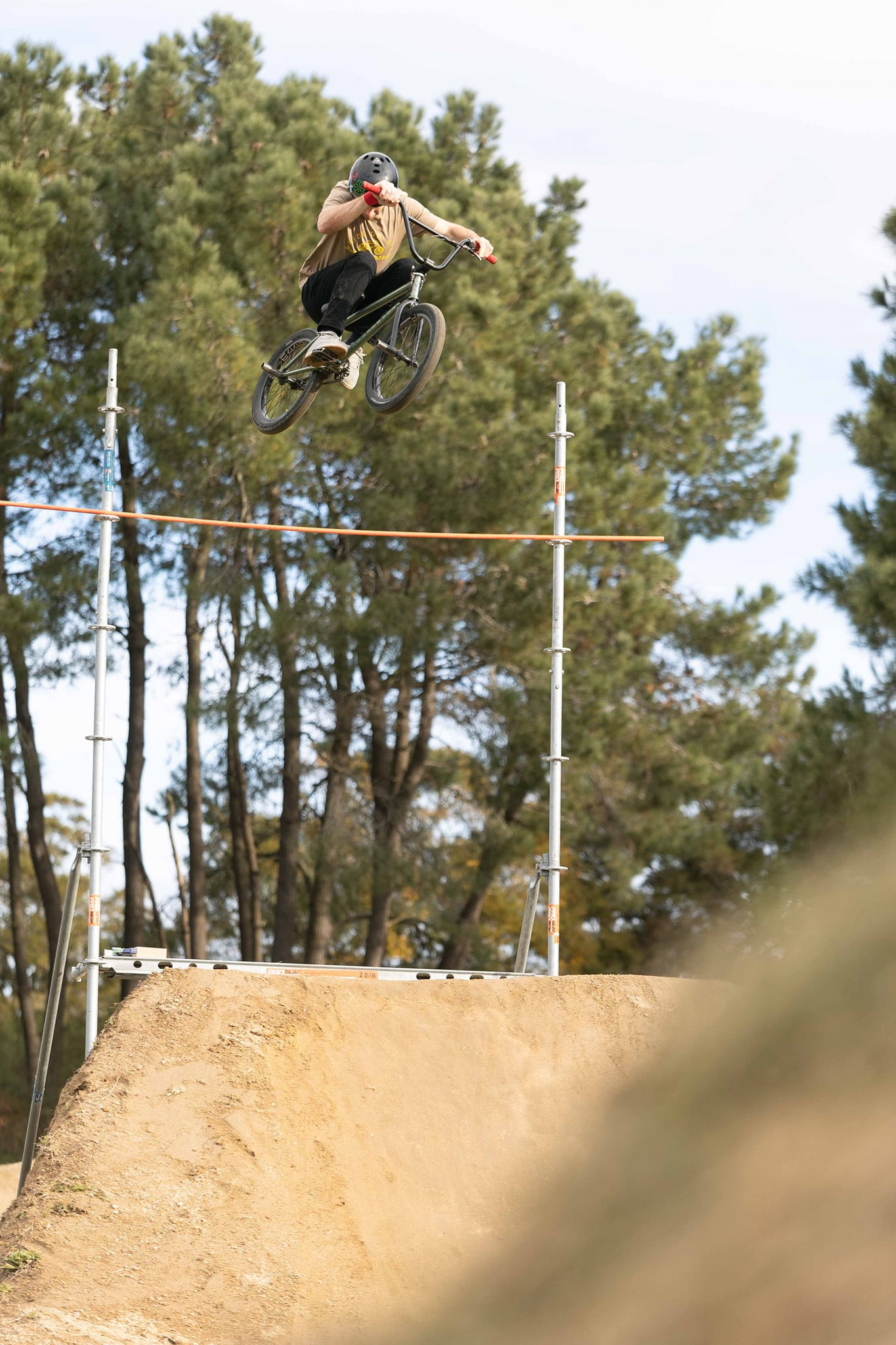
High jump competition at Spa Park, Taupo, featuring riders attempting extreme airtime, highlighting the sport’s progression.
Overall, learning to ride a dirt jump bike has significantly enhanced my mountain biking skills. It has refined my ability to accurately judge speed and pop needed to clear obstacles and broadened my terrain reading skills. Most importantly, it has dramatically boosted my confidence on the bike. Knowing I can navigate the challenges of a twitchy dirt jump bike with flat pedals makes tackling my larger, slacker enduro bike feel like conquering anything. Dirt jumping has become a regular part of my riding routine, weather permitting. It’s incredibly fun and provides a refreshing contrast to long trail rides. I can now confidently say, I am a dirt jumper.

